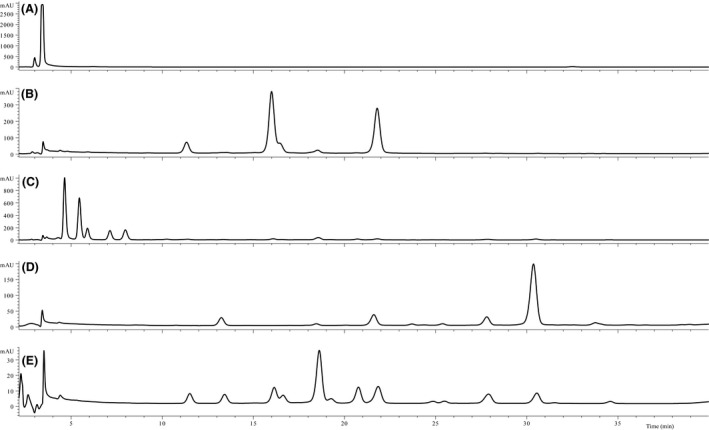Figure 4.

An array of adulterated bilberry dietary supplement samples anthocyanin profiles (BL9‐loose powder, BL10‐loose powder, BL14‐capsules, BL15‐capsules, and BL13‐capsules; represented in that order by traces A–E below). Bilberry sample BL6 is shown in Figure 3D. These anthocyanin profiles are presented as an example for future quality assurance assessments. Compared to bilberry anthocyanin profile in Figure 3A and Latti et al. 2008, it should be clear that these bilberry supplements are suspicious. For example, BL10's anthocyanin trace (Fig. 4B) is not Vaccinium myrtillus (bilberry), but that of Vaccinium floribundum (Andean blueberry; see Schreckinger et al. 2010 and Vasco et al. 2009).
